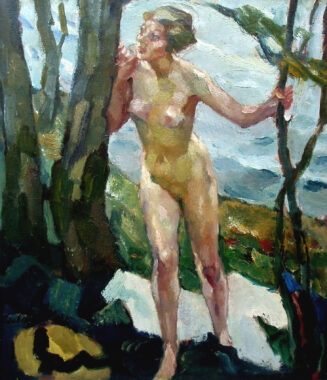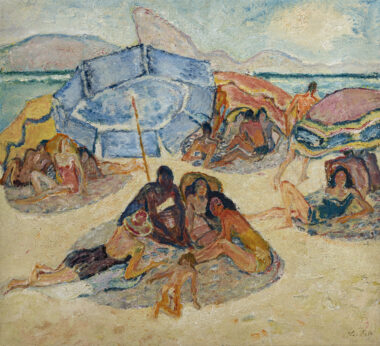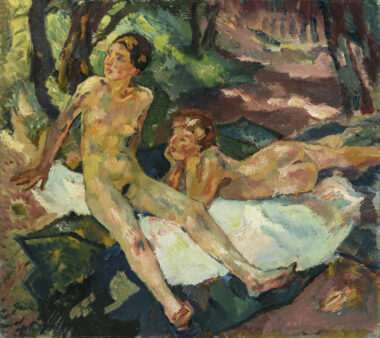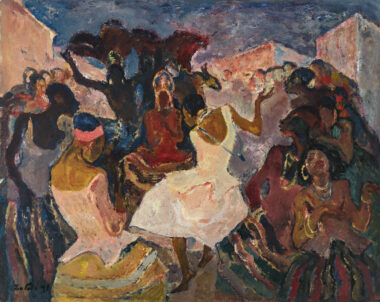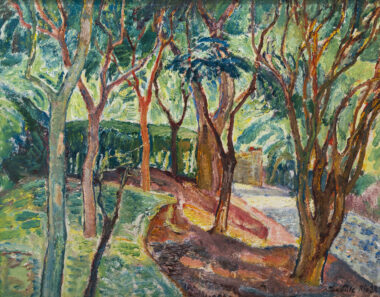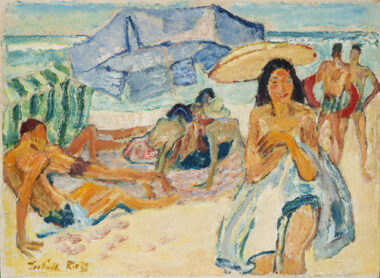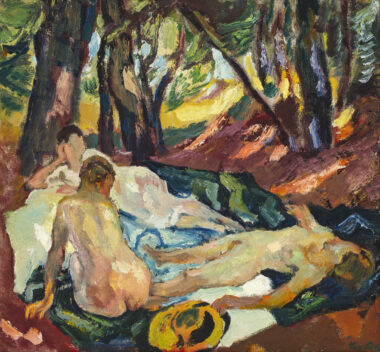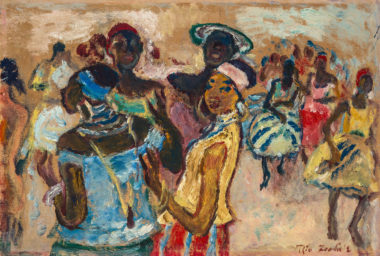Putz, Leo
Available Artworks
Sold Artworks
Biography
Leo Putz
1869 – Merano – 1940
Leo Putz ranks with Reinhold Max Eichler, Fritz Erler and Adolf Münzer as one of the leading representatives of the Munich artists’ association Die Scholle. Some of the group’s members met as students at the Munich Academy of Art, while others worked together at the magazine Jugend. Between 1899 and 1911 they exhibited as a group at the Munich Glaspalast and the Munich Secession. Although the Scholle had no firm programme and saw itself more as a loose association of artists with no mutual objective other than that “jeder seine eigene Scholle bebaue, die freilich auf keiner Landkarte zu finden ist” [lit. ‘each member should plough his own furrow, though that would certainly not be found on any map’], the group embodied one of the most progressive trends in painting at the turn of the twentieth century in Munich.
Symbolism had a marked influence on his early career and he quickly attracted attention with sombre, monumental oil paintings such as Vanitas and Vom Leben zum Tod [From Life to Death]. But he soon broke away from this to give vent to his humoristic side and produced highly imaginative erotic scenes based on mythological themes. The painting Bacchanale, which was shown in the Glaspalast in 1905 and had to be removed from the exhibition on grounds of indecency, is just one example of Putz’s calculated attempts at self-promotion, using provocation to stir up a scandal. But his efforts paid off: his breakthrough came in 1906 when noted gallerist Franz Josef Brakl took him under contract. A first monograph appeared in 1908. Putz was awarded a professorship in 1909.
In the first decade of the twentieth century his erotic imagery was gradually superseded by a new focus on female portraits and depictions of the nude. He liked to place his models in natural surroundings – at a shady lakeside table, walking in the park, or bathing, boating and reclining at the water’s edge. His brushwork underlines the serene, positive mood that these light-filled images convey. Broad modelling strokes of vibrant impasto mount up the surface of the canvas while gleaming highlights are counterbalanced with rich, dark tones to create vibrant contrasts, but always with the aim of achieving overall tonal harmony. A stylistic transition took place in Putz’s work in the years after World War I. Boldly applied planes of colour gave way to a patchwork of flickering, febrile brushstrokes. A more expressive quality began to characterise his pictorial language, which although restrained, showed his growing embrace of a modernist approach.
A last highlight of Putz’s oeuvre is the body of work he produced in Brazil and Argentina between 1929 and 1933. The exotic tropical environment with its unique impact on light and colour, as well as the contact with the indigenous population, were major sources of fascination for a central European painter. The experience of South America released in him a frenzy of creative activity, brightening and strengthening his palette. The many one-man exhibitions of his work held in Brazil and Argentina, together with the honorary professorship awarded him by the Academy of Fine Arts in Rio de Janeiro testify to the extraordinary success of his beach scenes, carnival processions and depictions of the tropical rainforest.
Putz fell gravely ill in 1933 and was obliged to return to Germany. Two years later, he was honoured with an important exhibition at the Munich Kunstverein showcasing his South American works. But even the liberal-minded Putz became involved in altercations with the Nazi regime. He opposed the NSDAP’s policies publicly. His art was labelled ‘degenerate’. When he was banned from working in Germany he decided to flee to Italy. He died four years later in his home town of Merano.
PDF Download